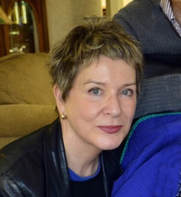 So do I stick my head into that glass-enclosed rectangular box? Will it fry my brain? Or will the damage show up in 20 years? Will my head come out looking like those primitive shrunken heads that repelled and fascinated me as a child? I’ve volunteered to have my head 3-D printed, and am checking out the equipment at the State University of New York. As it turns out—great relief—I don’t have to stick my head into the box after all; that’s where the “printing” occurs, not the scanning. The professor tells me to just sit upright and stay super still on a chair for a little over a minute, while his assistant uses a hand-held scanner—making several passes of the sides and top of my head and neck from about 30 inches away. In a couple minutes, the glass box starts to make noise and comes alive. The “printing” begins. For the color of my little sculpted head, I’m given a choice of red or white. Red seems a bit creepy, so I go for white. The plastic substance is long and cord-like, about 1/8 inch in diameter, and wrapped around a big spool at the back of the printer. One thin white layer after the other is laid down. It builds up, and slowly a tiny replica of my head begins to take shape. Half an hour, and it’s done. Sure enough, this looks like a miniature Roxie, about 2 inches high, with a flat back where it lay down on the printer, although the machine appeared to have quit just before it reached the tip of my nose, which is kind of cut off. So what can be done with this new kind of printing? Well, it is already being used in dentistry for making crowns. Jewelry can be created from metals, even gold. You can actually make plastic guns using this method. Unfortunately (or should I say fortunately), they don’t work very well—the plastic gets distorted rapidly from the heat and action of shooting a bullet. But maybe the most fun is making food. Nursing homes in Germany are taking pureed food and making it into appetizing shapes. NASA is researching making 3-D pizza in space. Instead of white plastic maybe I should have asked for chocolate—and turned myself into a delicious dessert. Roxie and her mini-me. (c) Roxie Munro 2014 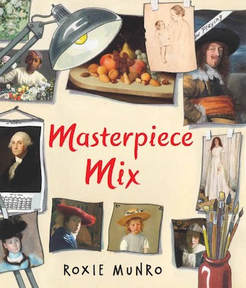 Using works from the National Gallery of Art by Vincent Van Gogh, Mary Cassatt, Edward Hopper, and others, Roxie Munro has created an innovative introduction to art. As an artist contemplates her next painting, she introduces genres and subjects, showcasing reproductions of great works. The sweeping painting she creates cleverly incorporates all 37 pieces she has considered. Children can have fun finding the masterpieces in her painting and learn more about the artists in the notes in the back matter. Read a review here. MLA 8 Citation Munro, Roxie. "Getting Your Head 3-D Printed." Nonfiction Minute, iNK Think Tank, 20 Sept. 2017, www.nonfictionminute.org/the-nonfiction-minute/getting-your-head-3-d-printed.
2 Comments
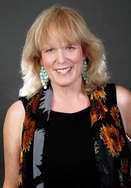 In 1953, a scientist named Edmund Schulman discovered that bristlecone pines are the world’s oldest trees. They live high in the mountains—between 9,000 and 11,000 feet above sea level where the soil is rocky, the air is as dry as a desert, and the temperatures are extremely hot in summer and cold in winter. Most ancient bristlecones grow in California’s White Mountains and Nevada’s Snake Range, and scientists now know that some of these trees are more than 5,000 years old. They are the oldest known living things on the planet. Edmund Schulman used a boring bit, a tool shaped like a drinking straw, to drill into old trees and pull pencil shaped pieces of wood called cores out of the trunks of very old trees. Cores contain patterns of stripes. One stripe represents one year of growth. Schulman counted more than 4,600 stripes from a tree he named Methuselah--after the oldest man in the Bible. Today, the Methuselah Tree’s exact location is kept secret to protect it from too many visitors. Like all ancient bristlecone pines, Methuselah’s annual growth rings contain secrets spanning thousands of years—secrets that are being discovered by scientists who know how to “read” tree rings. Rainfall, fires, volcanoes, droughts, and climate changes, are literally recorded in the growth rings. In the summer of 2011, I went searching for Methuselah. I brought along my camera. Although I am not a tree-ring scientist, I did my own research using my five senses. I tasted the pitch and pollen from cones (it was a little bit bitter); smelled the bark (it smelled like rain); touched wind sculpted and sun bleached wood surfaces (it was smooth and grooved); listened to the sound created when I tapped the rock-hard wood (it was sharp and short); and I was amazed by their strange forms and colors (they looked like dancers). Did I find Methuselah during my adventure? Actually, when I stopped searching,Methuselah found me. I will share that story along with a lot of science, in the book I am writing. But I won’t publish Methuselah’s photo or location. Some things must be kept secret. 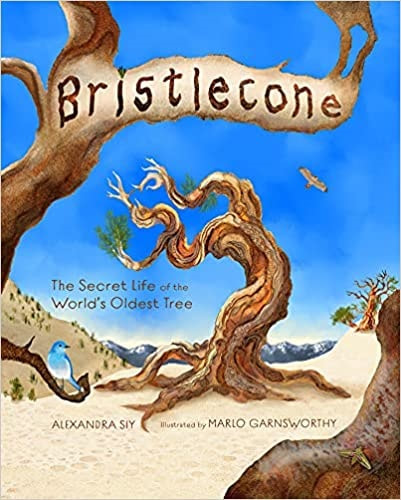 Alexandra Siy's latest book is Bristlecone: The Secret Life of the World's Oldest Tree. :know about about her new book from the author click here. Vicki Cobb's review says: "Siy and Garnsworthy have created a picture book for all ages that is creative nonfiction at its best. It spotlights STEAM, including an "A" for "art" plus science that shows us HOW we know while infusing a desire to WANT to know. It innovatively includes suspense, romance, and wonder in a tale of these battle-scarred heroes of the plant kingdom." Alexandra Siy is a member of iNK's Authors on Call and is available for remote classroom programs. . Click here to find out more. MLA 8 Citation Siy, Alexandra. "The Oldest Tree on Earth." Nonfiction Minute, iNK Think Tank, 10 Oct. 2017, www.nonfictionminute.org/the-nonfiction-minute/the-oldest-trees-on-earth. 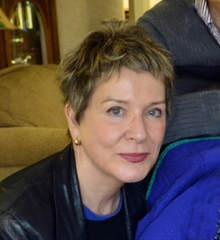 “What is this country bumpkin up to? Is this some kind of a joke?” Laughter rippled through the conference room in Richmond as Lemuel Chenoweth unloaded his saddlebags and took out a bunch of oak sticks wrapped in newspapers. He was the last builder to show his plans for the great competition in 1850 to build a bridge across the Tygart River in western Virginia (now West Virginia). Only a ferry connected the bustling north-south throughway at Philippi, causing traffic jams and the slowing of our young nation’s relentless commerce and travel. Engineers had come from all over the east to show their plans … blueprints of cable suspension bridges, fancy cantilevered structures, an arched bridge. It had to be durable, and support wagonloads of heavy goods and herds of livestock. ridge across the Tygart River in western Virginia (now West Virginia). Only a ferry connected the bustling north-south throughway at Philippi, causing traffic jams and the slowing of our young nation’s relentless commerce and travel. Quietly Lemuel assembled a miniature bridge, using no hammer or nails. Compared to the fancy bridge models shown, his was plain. Then, he pulled out two chairs, placed his construction across them, and spoke. “Since I have no blueprints,” he said, “you may allow me a demonstration.” Suddenly he stepped up onto the top of the model, and walked across it--from one end to the other. A gasp went up. No way could it hold! They knew their mathematics. Had this been the actual bridge it would have been as if a six-hundred-foot man stood on it. But the model held, and in the hushed silence that followed, Lemuel turned to the other contestants and asked, “Can you stand on your models?” No one dared. They all knew theirs would be crushed. And that's how Lemuel Chenoweth, a shy western Virginian with a third-grade education, won the competition for the famous Tygart River Bridge. The double-barreled bridge has survived fires, the Civil War, floods, and 18-wheeler trucks. It is the only covered bridge left in the US serving a federal highway. It has its own museum, and in 1983 Governor Jay Rockefeller declared June 15 Lemuel Chenoweth Day. Lemuel started out making furniture, wagons, and coffins, and later built houses, a church, and many bridges. He married Nancy Hart, the great-granddaughter of John Hart, signer of the Declaration of Independence. They had 13 children. So how do we know about this story? Because Lemuel Chenoweth was my great-great- granddaddy, and throughout my childhood I heard the story of Lemuel, the model bridge, and the two chairs. 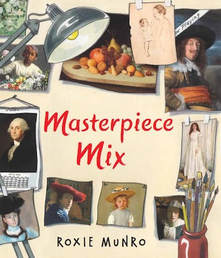 Roxie Munro's newest book uses thirty-seven of her favorite masterpieces by great artists as an inspiration for her own masterpiece that is a cityscape and a game. You can read a review of the book here. Roxie is also a member of iNK's Authors on Call where you can invite her to your classroom virtually. MLA 8 Citation Munro, Roxie. "Lemuel's Bridge." Nonfiction Minute, iNK Think Tank, 16 Oct. 2017, www.nonfictionminute.org/the-nonfiction-minute/lemuels-bridge.
José Batlló’s house in Barcelona, Spain, was looking a little shabby. So, Batlló turned to Antoni Gaudí, the city’s most inventive architect—and got a house that astonished all Barcelona. Its walls, studded with glittering blue and green shards, billowed like the sea. Some windows were egg-shaped, others had balconies resembling giant masks. The roof was more fanciful. Eerily iridescent, colors shifted from bluish green to golden orange. With scale-like tiles, it reminded people of a dinosaur’s backbone. Because of the oval windows, people called it the House of Yawns. Others, noticing columns that looked like shinbones, christened it House of Bones. Born in 1852 into a family of coppersmiths, Gaudí grew up in a small town near Barcelona. As a boy he roamed the countryside making sketches, living in his own world of discovery and fantasy. Becoming an architect was his childhood dream. He quickly developed a style entirely his own, drawing inspiration from nature rather than anything man-made. He was disdainful of straight lines. “They belong to men,” he used to say. “Curved lines belong to God.” Near Casa Battló stands another Gaudi creation: Casa Mila, a six-story apartment building which, because of its soft swelling shapes, has been likened to human lips, pastries, and a hornet’s nest. Still, many people love it. Among Gaudí’s accomplishments is what may be the world’s quirkiest park: Park Güell, a kind of fairy-tale fantasy, with two dancing gazelles flanking the entrance, a giant tile-encrusted lizard, and a roof topped with upturned coffee cups. Deeply religious, Gaudí spent his last twenty years working on Sagrada Familia, a cathedral unlike any other, with eighteen towers symbolizing the apostles, evangelists, the Virgin Mary, and Christ. It became such an obsession with Gaudí that he set up residence at the worksite. Once something of a dandy, he became increasingly careless with his appearance. This neglect may have contributed to his death. On a spring evening in 1926, taking one last loving look at a newly completed Sagrada Familia tower, he stepped off the sidewalk and was hit by a streetcar and knocked unconscious. Because of wretched clothing he was taken for a tramp and not immediately brought to a hospital. Gaudí was finally recognized, but was beyond help and died three days later. Gaudi's Park Güell is one of the most famous sights of Barcelona. welcoming more than 4 million visitors a year. Art by Roxie Munro. 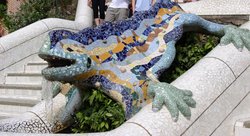 The tile-encrusted salamander in Park Güell has become a symbol of Gaudí's work. Wikimedia 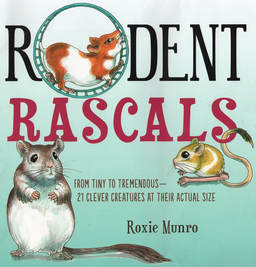 Check your favorite bookstore for Roxie's latest book coming out on February 6th. Rodent Rascals has already garnered three starred reviews with Roxie's fabulous actual-sized artwork accompanied by fascinating facts about 21 rodents who share our world. Roxie is a member of Authors on Call where she can visit your classroom and show you her work herself. Read more about here here. MLA 8 Citation
Munro, Roxie. "The Architect Who Hated Straight Lines." Nonfiction Minute`, iNK Think Tank, 31 Jan. 2018, www.nonfictionminute.org/the-nonfiction-minute/ the-architect-who-hated-straight-lines. How many of you have ever taken a selfie with friends and posted it on Instagram? Millions of people carry their cell phones with them all the time just in case they get a call or email. But we also use the camera on our iphones to record our day-to-day lives, sometimes exaggerating for affect. Did you know that the first selfie was taken in 1839 by Robert Cornelius, an American pioneer in photography? He had to uncover the lens, run to be in the photo and then go back to replace the lens cap. There is a copy of his selfie etched onto his gravestone. In 1913 the Grand Duchess Anastasia of Russia was only thirteen when she took a picture of herself in the mirror with a Kodak Brownie camera and sent it to a friend. In the 1970s instant cameras made it easier for amateur photographers to take photos with instant results. And digital cameras thirty years later made it even easier. When did the word selfie become a common word in the English language? I first heard it from my granddaughter, now thirteen-year-old Clara, who asked me to take a selfie with her on her smart phone. That was only about three years ago but by then “selfies,” especially by teenage girls, had flooded the internet. By 2017, social media, such as Facebook, Instagram and Snapchat, all of which encouraged the practice, reported over 800 million monthly users of their selfie promotion app. Features of this selfie phenomenon include apps that allow users to alter their appearance, sometimes in both hilarious and unflattering ways. In 2013 the Oxford English Dictionary anointed the selfie word of the year, making it officially worthy of a spot in our vocabulary. Here is their definition. “A photograph that one has taken of oneself, typically one taken with a smartphone or webcam and shared via social media.” Cindy Sherman, an artist who uses photographs as her medium, just as others might use paints and brushes, has made a career of using herself as the model, the photographer, the director and the costumer of her artwork. As a child she loved dressing up, disguising herself with make-up and clothes she collected at Goodwill or secondhand shops. When she grew up, she still liked playing dress-up and at art school, started photographing herself posed in various roles. Her first photographs in black and white, grainy images she meant to be faded and imperfect, came out in 1977. She was in her twenties, living in New York, working as a receptionist in an art gallery. As a clown, a teen queen, a society matron, a biker, and many other characters in elaborate costumes, she mainly explored roles of women in America’s cultural landscape. The art world took notice of these sixty-nine black-and-white prints of young women, who each seemed caught in an uncomfortable or scary moment. Sherman’s career has moved forward with fame and fanfare ever since. Two summers ago she took her private Instagram account public. Tens of thousands of followers signed on to watch Sherman’s self-portraits, wildly distorted headshots of herself. Instead of masquerading with fake noses and lips, thick make-up and wild get-ups, she used Facetune, Perfect365, and YouCamMakeup to change the shape of her face, the color of her eyes, her hair and her complexion. The results were both hilarious and frightening. How did she start on this new quest? She says she was lying around for weeks after an injury and just started playing around with her iphone, taking a look at some apps friends had told her about. The results, she says, are not competing with her serious art. She’s not a perfectionist about these selfies as she is in her studio. But selfies freed her up to experiment. They allowed her to imagine the images of these molded and sculpted, at times grotesque, at other times fetching portraits going out into cyber space. She envisioned them arriving onto thousands of screens and devices, each time making us all wonder yet again, “Who is the real Cindy Sherman?” “Who is the real me?” 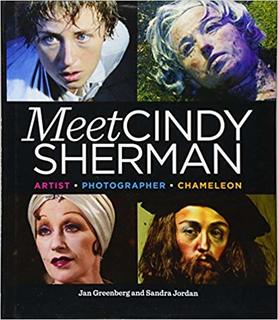 Jan Greenberg's latest book (with Sandra Jordan) is Meet Cindy Sherman: Artist-Photographer-Chameleon. They have created an unconventional biography, that much like Cindy Sherman's famous photographs, has something a little more meaningful under the surface. Infusing the narrative with Sherman's photographs, as well as young people's first impressions of the photographs, this is a biography that goes beyond birth, middle age, and later life. It's a look at how we look at art. |
*NEWS
|
For Vicki Cobb's BLOG (nonfiction book reviews, info on education, more), click here: Vicki's Blog
The NCSS-CBC Notable Social Studies Committee is pleased to inform you
that 30 People Who Changed the World has been selected for Notable Social Studies Trade Books for Young People 2018, a cooperative project of the National Council for the Social Studies (NCSS) & the Children’s Book Council
Categories
All
Abolitionists
Adams Janus
Adaptation
Adaptations
Adkins Jan
Advertising
Aerodynamics
Africa
African American History
African Americans
Africa West
Agriculture
Aircraft
Air Pilots
Air Pressure
Air Travel
Albee Sarah
Alchemy
Alligators
Allusion
American History
American Icons
Amphibians
Amundsen Roald
Anatomy
Ancient
Ancient Cultures
Anderson Marian 1897-1993
Animal Behavior
Animal Experimentation
Animal Intelligence
Animals
Animation
Antarctica
Ants
Apache Indians
Apes
April Fool's Day
Architecture
Argument
Arithmetic
Art
Art Deco
Artists
Arts
Asia
Astronauts
Astronomy
Athletes
Atomic Theory
Audubon Societies
Authors
Autobiography
Automobiles
Aviation
Awards
Bacteria
Baseball
Battuta Ibn
Bears
Beatles
Beavers
Bees
Biodegradation
Biography
Biology
Biomes
Biomimicry
Biplanes
Birds
Black Death
Black History
Blindness
Blizzards
Bombs
Bonaparte Napoleon
Boone Daniel
Botany
Brazil
Bridges
Brill Marlene Targ
Brooklyn Bridge
Brown John
Buffaloes
Building Materials
Butterflies
Caesar
Caesar Julius
Caissons
Calculus
Calendars
Cannibal
Capitals
Caravaggio
Carbon Dioxide
Carnivores
Carson Mary Kay
Cartoons & Comics
Carving (Decorative Arts)
Cascade Range
Castaldo Nancy
Castles
Castrovilla Selene
Cathedrals
Cats
Caves
Celts
Cemeteries
Chemistry
Children's Authors
Child Welfare
China
Choctaw Indians
Christmas
Chronometers
Cicadas
Cinco De Mayo
Ciphers
Circle
Citizenship
Civil Rights
Civil Rights Movements
Civil War
Civil War - US
Climate
Climate Change
Clocks And Watches
Clouds
Cobb Vicki
COBOL (Computer Language)
Code And Cipher Stories
Collard III Sneed B.
Collectors And Collecting
Color
Commerce
Communication
Competition
Compilers
Composers
Computers
Congressional Gold Medal
Consitution
Contests
Contraltos
Coolidge Calvin
Cooling
Corms
Corn
Counterfeiters
Covid-19
Crocodiles
Cryptography
Culture
Darwin Charles
Declaration Of Independence
Decomposition
Decompression Sickness
Deep-sea Animals
Deer
De Medici Catherine
Design
Detectives
Dickens Charles
Disasters
Discrimination
Diseases
Disney Walt
DNA
Dogs
Dollar
Dolphins
Douglass Frederick 1818-1895
Droughts
Dr. Suess
Dunphy Madeleine
Ear
Earth
Earthquakes
Ecology
Economics
Ecosystem
Edison Thomas A
Education
Egypt
Eiffel-gustave-18321923
Eiffel-tower
Einstein-albert
Elephants
Elk
Emancipationproclamation
Endangered Species
Endangered-species
Energy
Engineering
England
Englishlanguage-arts
Entomology
Environmental-protection
Environmental-science
Equinox
Erie-canal
Etymology
Europe
European-history
Evolution
Experiments
Explorers
Explosions
Exports
Extinction
Extinction-biology
Eye
Fairs
Fawkes-guy
Federalgovernment
Film
Fires
Fishes
Flight
Floods
Flowers
Flute
Food
Food-chains
Foodpreservation
Foodsupply
Food-supply
Football
Forceandenergy
Force-and-energy
Forensicscienceandmedicine
Forensic Science And Medicine
Fossils
Foundlings
France
Francoprussian-war
Freedom
Freedomofspeech
French-revolution
Friction
Frogs
Frontier
Frontier-and-pioneer-life
Frozenfoods
Fugitiveslaves
Fultonrobert
Galapagos-islands
Galleys
Gametheory
Gaudi-antoni-18521926
Gender
Generals
Genes
Genetics
Geography
Geology
Geometry
Geysers
Ghosts
Giraffe
Glaciers
Glaucoma
Gliders-aeronautics
Global-warming
Gods-goddesses
Gold-mines-and-mining
Government
Grant-ulysses-s
Grasshoppers
Gravity
Great-britain
Great-depression
Greece
Greek-letters
Greenberg Jan
Hair
Halloween
Handel-george-frederic
Harness Cheryl
Harrison-john-16931776
Health-wellness
Hearing
Hearing-aids
Hearst-william-randolph
Henry-iv-king-of-england
Herbivores
Hip Hop
History
History-19th-century
History-france
History-world
Hitler-adolph
Hoaxes
Holidays
Hollihan Kerrie Logan
Homestead-law
Hopper-grace
Horses
Hot Air Balloons
Hot-air-balloons
Housing
Huguenots
Human Body
Hurricanes
Ice
Icebergs
Illustration
Imagery
Imhotep
Imperialism
Indian-code-talkers
Indonesia
Industrialization
Industrial-revolution
Inquisition
Insects
Insulation
Intelligence
Interstatecommerce
Interviewing
Inventions
Inventors
Irrational-numbers
Irrigation
Islands
Jacksonandrew
Jazz
Jeffersonthomas
Jefferson-thomas
Jemisonmae
Jenkins-steve
Jet-stream
Johnsonlyndonb
Jokes
Journalism
Keeling-charles-d
Kennedyjohnf
Kenya
Kidnapping
Kingmartinlutherjr19291968
Kingmartinlutherjr19291968d6528702d6
Kings-and-rulers
Kings Queens
Kings-queens
Koala
Labor
Labor Policy
Lafayette Marie Joseph Paul Yves Roch Gilbert Du Motier Marquis De 17571834
Landscapes
Languages-and-culture
Law-enforcement
Layfayette
Levers
Levinson Cynthia
Lewis And Clark Expedition (1804-1806)
Lewis Edmonia
Liberty
Lift (Aerodynamics)
Light
Lindbergh Charles
Liszt Franz
Literary Devices
Literature
Lizards
Longitude
Louis XIV King Of France
Lumber
Lunar Calendar
Lynching
Macaws
Madison-dolley
Madison-james
Madison-james
Mammals
Maneta-norman
Maneta-norman
Marathon-greece
Marine-biology
Marine-biology
Marines
Marsupials
Martial-arts
Marx-trish
Mass
Massachusetts-maritime-academy
Mass-media
Mastodons
Mathematics
May-day
Mcclafferty-carla-killough
Mcclafferty-carla-killough
Mckinley-william
Measurement
Mechanics
Media-literacy
Media-literacy
Medicine
Memoir
Memorial-day
Metaphor
Meteorology
Mexico
Mickey-mouse
Microscopy
Middle-west
Migration
Military
Miners
Mississippi
Molasses
Monarchy
Monsters
Montgomery
Montgomery-bus-boycott-19551956
Montgomery-heather-l
Monuments
Moon
Moran-thomas
Morsecode
Morsesamuel
Moss-marissa
Moss-marissa
Motion
Motion-pictures
Mummies
Munro-roxie
Munro-roxie
Musclestrength
Museums
Music
Muslims
Mythologygreek
Nanofibers
Nanotechnology
Nathan-amy
Nathan-amy
Nationalfootballleague
Nationalparksandreserves
Nativeamericans
Native-americans
Native-americans
Naturalhistory
Naturalists
Nature
Nauticalcharts
Nauticalinstruments
Navajoindians
Navigation
Navy
Ncaafootball
Nervoussystem
Newdeal19331939
Newman-aline
Newman-aline
Newton-isaac
New-york-city
Nobelprizewinners
Nomads
Nonfictionnarrative
Nutrition
Nylon
Nymphs-insects
Oaths Of Office
Occupations
Ocean
Ocean-liners
Olympics
Omnivores
Optics
Origami
Origin
Orphans
Ottomanempire
Painters
Painting
Paleontology
Pandemic
Paper-airplanes
Parksrosa19132005
Parrots
Passiveresistance
Patent Dorothy Hinshaw
Peerreview
Penguins
Persistence
Personalnarrative
Personification
Pets
Photography
Physics
Pi
Pigeons
Pilots
Pinkertonallan
Pirates
Plague
Plains
Plainsindians
Planets
Plantbreeding
Plants
Plastics
Poaching
Poetry
Poisons
Poland
Police
Political-parties
Pollen
Pollution
Polo-marco
Populism
Portraits
Predation
Predators
Presidentialmedaloffreedom
Presidents
Prey
Prey-predators
Prey-predators
Prime-meridian
Pringle Laurence
Prohibition
Proteins
Protestandsocialmovements
Protestants
Protestsongs
Punishment
Pyramids
Questioning
Radio
Railroad
Rainforests
Rappaport-doreen
Ratio
Reading
Realism
Recipes
Recycling
Refrigerators
Reich-susanna
Religion
Renaissance
Reproduction
Reptiles
Reservoirs
Rheumatoidarthritis
Rhythm-and-blues-music
Rice
Rivers
Roaringtwenties
Roosevelteleanor
Rooseveltfranklind
Roosevelt-franklin-d
Roosevelt-theodore
Running
Russia
Safety
Sanitation
Schwartz David M
Science
Scientificmethod
Scientists
Scottrobert
Sculpture
Sculpturegardens
Sea-level
Seals
Seals-animals
Secretariesofstate
Secretservice
Seeds
Segregation
Segregationineducation
Sensessensation
September11terroristattacks2001
Seuss
Sextant
Shackletonernest
Shawneeindians
Ships
Shortstories
Silkworms
Simple-machines
Singers
Siy Alexandra
Slavery
Smuggling
Snakes
Socialchange
Social-change
Socialjustice
Social-justice
Socialstudies
Social-studies
Social-studies
Sodhouses
Solarsystem
Sound
Southeast-asia
Soybean
Space Travelers
Spain
Speech
Speed
Spiders
Spies
Spiritualssongs
Sports
Sports-history
Sports-science
Spring
Squirrels
Statue-of-liberty
STEM
Storms
Strategy
Sugar
Sumatra
Summer
Superbowl
Surgery
Survival
Swanson-jennifer
Swinburne Stephen R.
Synthetic-drugs
Taiwan
Tardigrada
Tasmania
Tasmanian Devil
Tasmanian-devil
Technology
Tecumsehshawneechief
Telegraph-wireless
Temperature
Tennis
Terrorism
Thomas Peggy
Thompson Laurie Ann
Time
Titanic
Tombs
Tortoises
Towle Sarah
Transcontinental-flights
Transportation
Travel
Trees
Trung Sisters Rebellion
Tundra
Turnips
Turtles
Typhoons
Underground Railroad
Us-environmental-protection-agency
Us History
Us-history
Ushistoryrevolution
Us History Revolution
Us-history-war-of-1812
Us Presidents
Ussupremecourtlandmarkcases
Vacations
Vaccines
Vangoghvincent
Vegetables
Venom
Vietnam
Viruses
Visual-literacy
Volcanoes
Voting-rghts
War
Warne-kate
Warren Andrea
Washington-dc
Washington George
Water
Water-currents
Wax-figures
Weapons
Weather
Weatherford Carole Boston
Whiting Jim
Wildfires
Winds
Windsor-castle
Wolves
Woman In History
Women
Women Airforce Service Pilots
Women-airforce-service-pilots
Womeninhistory
Women In History
Women-in-science
Women's History
Womens-roles-through-history
Wonder
Woodson-carter-godwin-18751950
World-war-i
World War Ii
World-war-ii
Wright Brothers
Writing
Writing-skills
Wwi
Xrays
Yellowstone-national-park
Zaunders Bo
ArchivesMarch 2021
February 2021
January 2021
December 2020
November 2020
October 2020
September 2020
June 2020
May 2020
April 2020
March 2020
February 2020
January 2020
December 2019
October 2019
September 2019
August 2019
July 2019
May 2019
April 2019
March 2019
February 2019
January 2019
December 2018
November 2018
September 2018
June 2018
May 2018
April 2018
March 2018
February 2018
January 2018
December 2017
November 2017
October 2017
September 2017
March 2017
The NONFICTION MINUTE, Authors on Call, and. the iNK Books & Media Store are divisions of iNK THINK TANK INC.
a 501 (c) (3) nonprofit corporation. To return to the iNK Think Tank landing page click the icon or the link below. :
http://inkthinktank.org/
For more information or support, contact thoughts@inkthinktank.org
For Privacy Policy, go to
Privacy Policy
© COPYRIGHT the Nonfiction Minute 2020.
ALL RIGHTS RESERVED.
This site uses cookies to personalize your experience, analyze site usage, and offer tailored promotions. www.youronlinechoices.eu
Remind me later
Archives
March 2023
February 2023
January 2023
December 2022
November 2022
October 2022
September 2022
June 2022
May 2022
April 2022
March 2022
February 2022
January 2022
December 2021
November 2021
September 2021
April 2021
March 2021
February 2021
November 2020
October 2020
September 2020
June 2020
May 2020
April 2020
March 2020
February 2020
January 2020
October 2019
August 2019
July 2019
May 2019
April 2019
December 2018
September 2018
June 2018
May 2018
March 2018
February 2018
January 2018
December 2017
November 2017
October 2017
September 2017


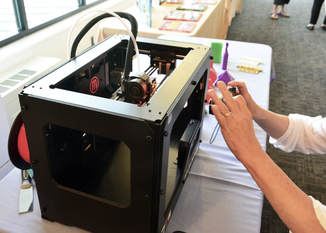
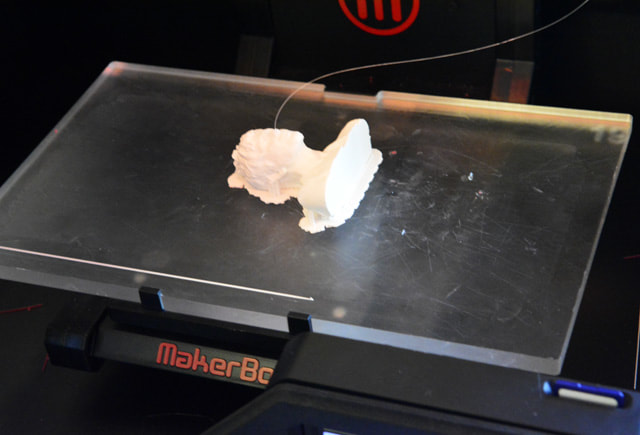

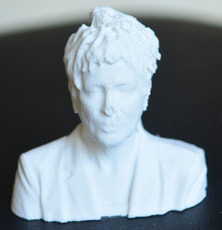
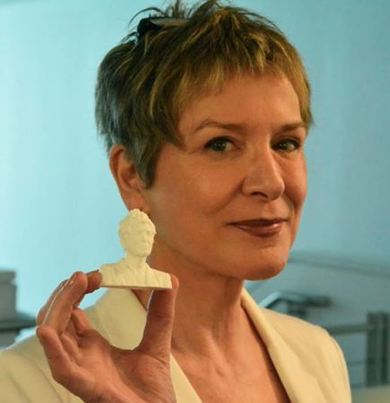


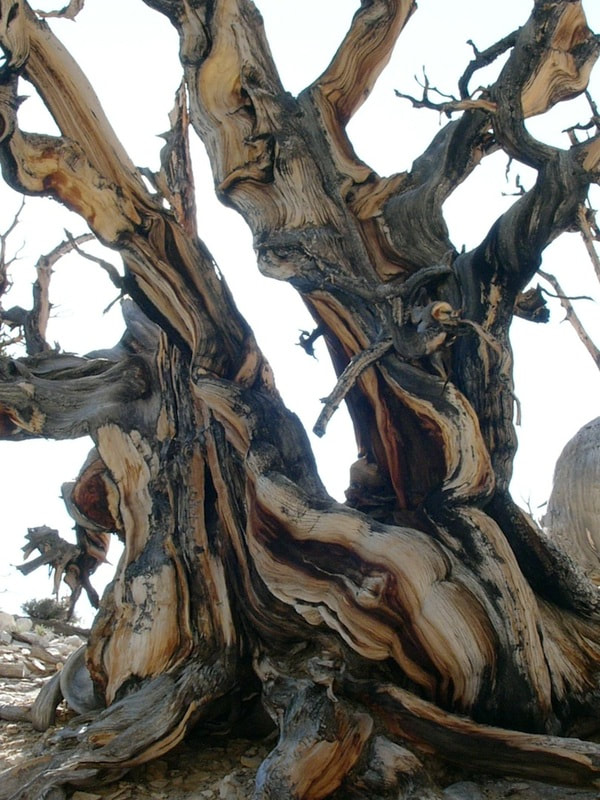



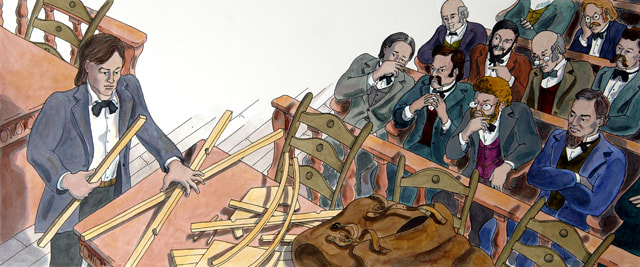
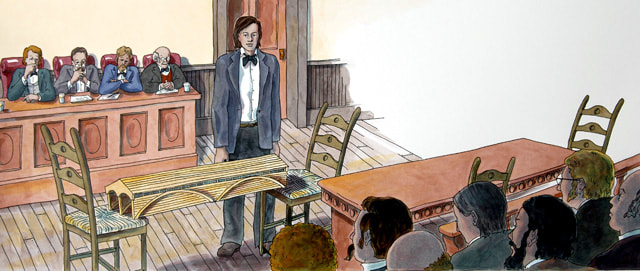
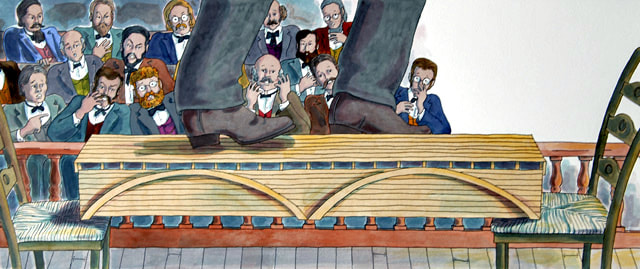
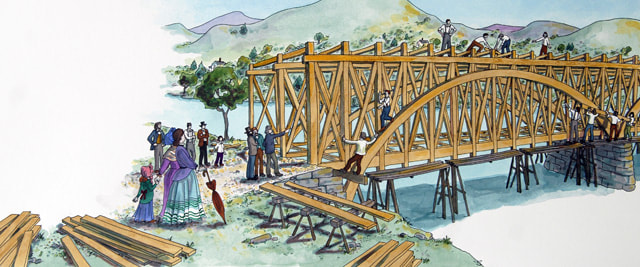
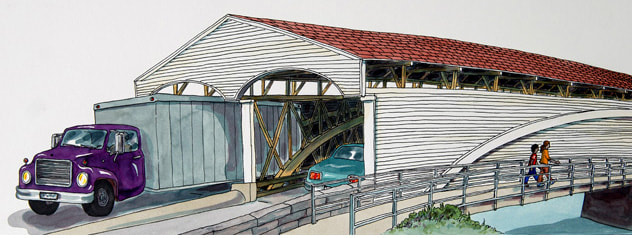

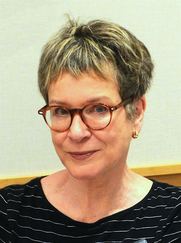


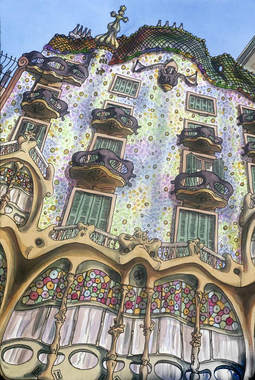
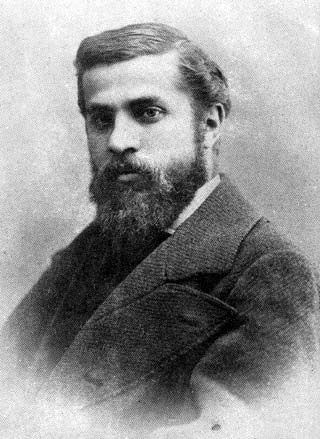
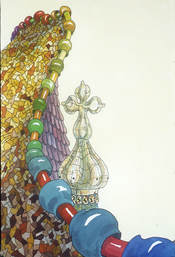
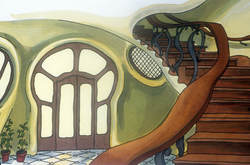


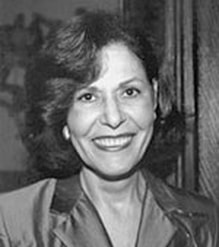
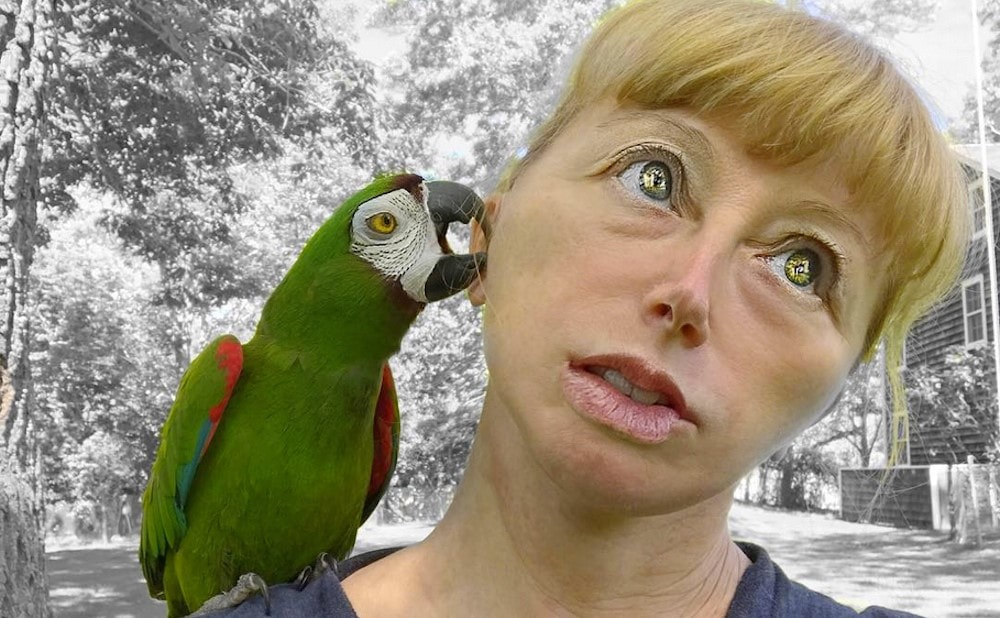

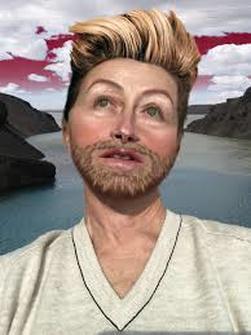

 RSS Feed
RSS Feed
